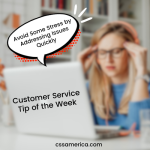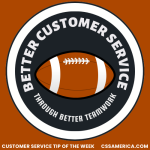We’ve done enough secret shopping for our clients to know that employees are not happy to learn that they might be shopped. It’s tough to get evaluated, and it’s especially tough when the evaluator is some mystery person. But in the article Secret shoppers reveal best in customer service, a mystery shopping engagement in California results in…awards!
The secret shoppers identified eight residents who provided exceptional service, and the eight individuals were rewarded with certificates and prizes.
This is the part that many organizations forget when they do research – whether that research is a customer satisfaction survey or a mystery shopping engagement. The goal is not just to see what you can do better, but it’s also to celebrate success. We often talk about redirecting people when they do poorly and reinforcing what they do right. It’s not about punishment; it’s about improvement. And one of the best ways to improve is to highlight (and then replicate) success!
We have a hospital client which we meet with quarterly to review patient satisfaction survey results and create Action Plans for the upcoming quarter. Well over 60% of the Action Items listed deal with sharing positive results with staff, recognizing customer service stars, and celebrating success.
So when your organization does research, remember that’s it’s not about the “gotcha” moments. It’s about finding opportunities to improve and opportunities to reward and recognize.
Get shopped to highlight great customer service.
Read our New Book – “Ask Yourself…Am I GREAT at Customer Service?” http://www.amigreatat.com/
Listen to our latest podcast episode of “Stepping Up Service” on The MESH Network at http://themesh.tv/stepping-up-service/
Interested in improving your company’s customer service? See more at our new website! http://www.cssamerica.com/





















